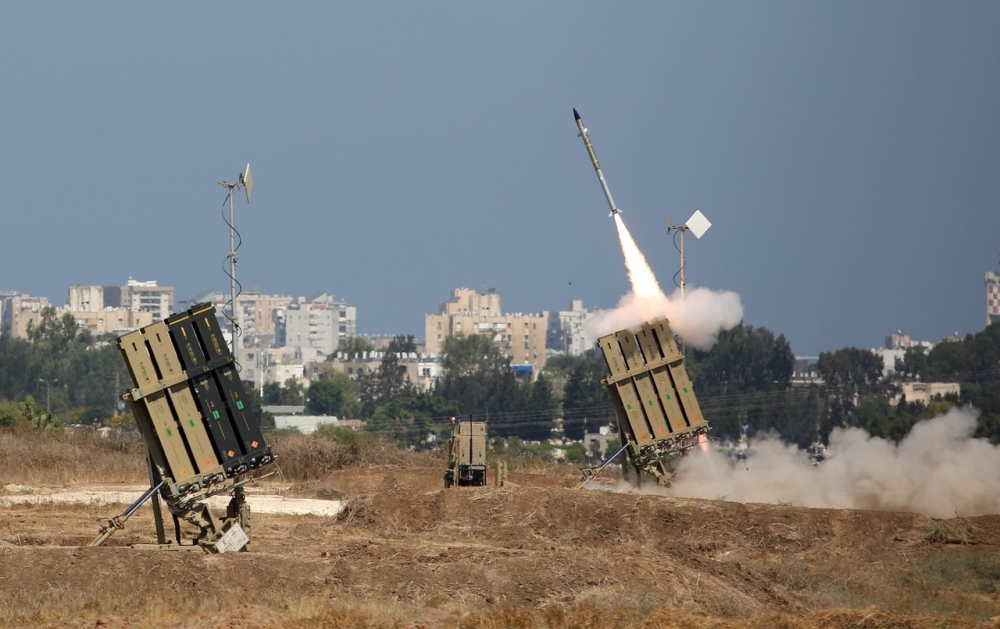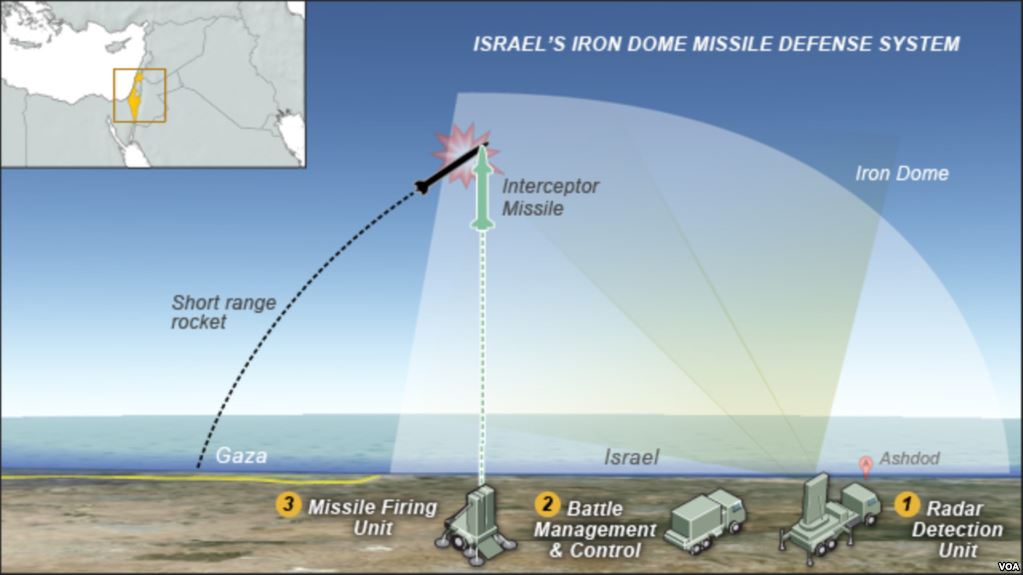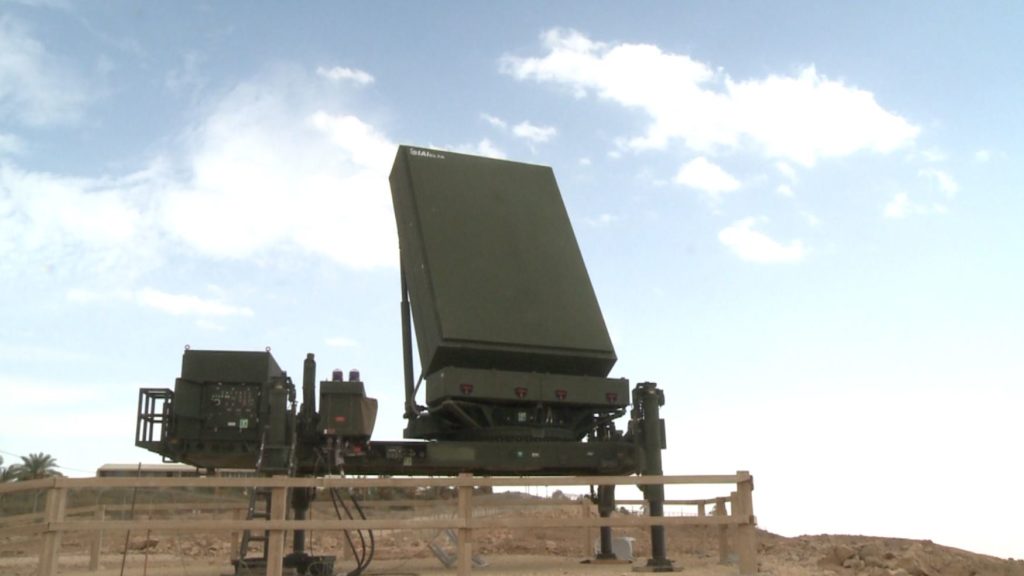Iron Dome Origins
Since its inception, Israel has faced difficult political and military challenges. It defines the operational space in which IDF exists, the nature of development of its armed forces, and of individual weapons systems it uses.
The key objective and permanent factors include:
- Israel’s geography, with the 470km-long country being no more than 135km wide.
- Hostile environment, including unresolved territorial disputes with neighbors and the Palestinian problem.
- Close proximity to borders of major cities and critical infrastructure.
At the same time, Israel did not treat its adversaries’ ability to use rockets as a priority for a long time, therefore establishing a comprehensive ABM system was not among its priorities either. The situation changed after the 1991 Gulf War, when Iraq struck Israeli cities using improved Soviet R-17 (NATO classification SS-1b Scud-B) ballistic missiles. At that time, US Patriot PAC-2 ABM systems were used to protect Israeli cities, however, they demonstrated their ineffectiveness. Therefore a decision was made to push the development of the Arrow and Arrow-2 ABM system jointly with the US, with the first systems deployed in March 2000.
The Arrow-2 system was intended to defeat attacks using ballistic missiles with ranges up to 3,000km. However, Hezbollah and Hamas were expanding their use of short-range rocket artillery. The Second Lebanon War of 2006 showed Israel to be vulnerable against such weapons. In that conflict, Hezbollah used a wide range of 107mm, 102mm, 220mm, 240mm, and 302mm rockets of Soviet, Chinese, Syrian, and Iranian manufacture with ranges between 6 and 210km, such as the Fajr-3, Zelzal, Nazeat, and others. Between July 13 and August 13, Israel was the target of 4228 rockets which caused 53 civilian fatalities, 250 wounded, and 2000 cases of light injuries, in addition to considerable damage to infrastructure and housing.
Following this war, Israel’s leaders decided it was necessary to establish a tactical ABM system, and in February 2007 the decision to develop Iron Dome was made, with Rafael Advanced Defence Systems already working on it at that time. Its deployment in Israel began in 2011.
Tasks, missions, and characteristics
According to Rafael data, Iron Dome is a dual-purpose system: intercepting rockets, shells, and mortar bombs (counter-rocket, artillery, and mortar, or C-RAM), and also very short range air defense (VSHORAD).
Iron Dome’s main mission, according to a Rafael brochure, is protecting civilians in cities, strategic facilities, and infrastructure, and also reducing collateral damage. It may also be used to protect troop convoys and ships. The system can operate around the clock, in any weather and climate.
Tasks
Iron Dome is intended to rapidly detect, identify, and intercept asymmetrical means of attack, such as:
- short range rockets (4-70km)
- mortar bombs
- artillery shells.
Moreover, when used as a SAM, Iron Dome can engage aerial target, including aircraft, helicopters, UAVs, PGMs.
Iron Dome includes the following components:
- EL/M-2084 truck-mounted multirole radar.
- Fire control system.
- Three truck-towed launchers, each with 20 Tamir interceptor rockets.
A single system is capable of protecting an area of 150 km2.
Tamir characteristics:
- Length: 3m
- Caliber: 160mm
- Warhead weight: 11kg
- Intercept ceiling: 10km
- Max speed: M 2.2 (700 m/s)
The missile is equipped with a homing sensor under a metallic ballistic cone to protect it against high temperatures. The cone is ejected several seconds prior to the intercept using the proximity-fused warhead.
Tests of the naval version of Iron Dome concluded in November 2017. There are plans to install it on Sa’ar-5 corvettes and to protect drilling platforms in coastal areas.
One of Iron Dome’s specifics is its ability to identify priority targets, and to intercept only those which pose a threat to protected sites. This ability is provided by the high-tech fire control system integrated with the EL/M 2084 radar.
If the incoming projectile is predicted to fall in uninhabited areas, launch commands are not issued in order to reduce operational expenses since each intercept costs several tens of thousands of dollars.
Intercepts are carried out by Tamir rockets which detonate in close proximity to the intercepted objects. The intercept takes place at the peak of target trajectory to reduce contamination should the warhead carry chemical or biological agents.
Development and Operating Costs
United States have been active in financing the development, production, and servicing of Iron Dome since 2011. The program’s overall cost has been estimated at approximately $4.5 billion, with the US contribution being over $1.5 billion. The US budget for 2018 includes $92 million to finance Iron Dome.
US participation in Iron Dome is motivated by the need to support ABM development by its main ally in the region, and creating a technological base for own future ABM systems. The main US Iron Dome partner has been Raytheon, with some 55% of its components that are financed by the US are made by US contractors, chiefly Raytheon.
Each Iron Dome battery costs about $50 million, while each Tamir rocket is estimated at $20-100 thousand. Operating costs is difficult to estimate.
Export
As of June 2018, Iron Dome is being supplied to Canada, Azerbaijan, India, and several other countries. Czech Republic will receive them in the near future. The total volume of sales has reached $2 billion. Israel declared its intent to export the system many times. Interested parties have included South Korea, Singapore, Saudi Arabia, United States which have voiced interest in buying the system to protect own bases in Iraq and Afghanistan.
Effectiveness Assessment
Iron Dome effectiveness is subject of considerable debate among the expert community. Rafael has touted the system as highly effective, with Israel’s Ministry of Defense (MOD) supporting that assessment.
Effectiveness assessments are mainly based on the Second Lebanon War and two IDF operations in Gaza: Pillar of Cloud (2012) and Protective Edge (2014). Here’s what IDF has reported concerning Iron Dome in these operations:
Thus according to the IDF, in 8 days of Pillar of Cloud Hamas launched 1506 rockets at Israel, of which 421 were intercepted, 875 fell in unpopulated areas, 58 in populated areas, 6 were killed, 240 were wounded. IDF claims Iron Dome effectiveness was 84%.
However, this data is doubted by US and Israeli experts. First of all, given IDF information on launched and intercepted rockets, system effectiveness should be about 87.9%(421 + 58=479=100%; 421/479*100=87,9%). The operational cost of Iron Dome (including Tamir interceptor rockets) was $25-30 million.
Secondly, according to Israeli police southern district data, some 109 rockets fell in populated areas, not 58. There is also no data on the reasons most of the rockets launched against Israel missed. This is likely due to the low quality of rockets used by Palestinians.
IDF claims that during Protective Edge, Palestinians launched 4500 rockets of which 692 were intercepted [during 50 days]. No additional data was provided, and the high indicated effectiveness (90%) also causes doubts due to the lack of IDF transparency. It’s clear that Iron Dome is not cost-effective. Hamas and Hezbollah rockets cost between $300 (Grad) and $800 (Qassam). When assessing cost-effectiveness, IDF should consider insurance payments for damaged property. Comparing this data for the three above-mentioned operations has led experts to conclude that per-rocket damage has been reduced from $29,500 in 2006, to $9,000 in 2012, and $5,100 in 2014.
However, some US experts doubt the objectivity of official Israeli data and believe that intercept probability is about 5%. According to Michael Anderson, an expert with the Brock University, reduction in rocket effectiveness since the 2nd Lebanon War was due not only to Iron Dome, but also to a series of other measures, including early warning and bomb shelter improvements. Moreover, Gaza and 2nd Lebanon War can hardly be compared, in part because of the differences in population density between southern and northern Israel. Accurate assessments are also made difficult by absence of sufficient verifiably accurate information, much of which remains classified.
Overcoming Iron Dome
Israel is continuing Iron Dome purchases. It’s also clear Hezbollah, Hamas, and their allies will seek to improve own offensive weapons to make them more effective at overcoming Iron Dome, with two parallel approaches, tactical and technical.
From the technical point of view, the attacker will seek to improve munitions accuracy. If guided artillery shells are used, Iron Dome effectiveness would be much lower. According to IDF air defense commander Zwick Haimovich, Hezbollah and Hamas will be able to strike Israel using cruise missiles. Even when these improved systems are intercepted, they would increase Israel’s expenditures on air defenses because more interceptor rockets would be needed.
Tactically, the obvious response is placing offensive weapons in direct proximity of targets, given that Iron Dome’s minimum effective range is 4km. Even today Hezbollah can strike 75% of Israel’s territory using systems it currently owns.
Iron Dome has only limited abilities to intercept several targets simultaneously. Therefore Israel’s opponents will seek to increase the density of its rocket volleys. Increasing the number of cheap weapons is the most likely course adversaries will adopt. According to some reports, Hezbollah has already increased the number of its rockets by several times, to more than 100 thousand.
Combining unguided and guided rockets would greatly increase the ability to overcome ABM defenses. Moreover, ABM systems would be degraded if faced by multiple adversaries operating from different directions. According to open source data, Iron Dome is quite sensitive and often reacts to false alarms, for example, from machine-gun bursts. This vulnerability is an obvious one to exploit. The psychological factor also matters. RAND analysts are correct to note that reducing casualties among Israeli civilians has a negative media effect against the backdrop of losses among Palestinians or Lebanese. Hamas and Hezbollah deliberately place own launchers among civilian quarters to increase the number of civilian casualties.
Iron Dome development prospects
Iron Dome will be modernized to address existing problems and to adapt to developments in offensive means. Moreover, fire control and radar systems will be modernized as well. On the one hand, the system will be better able to detect launches and predict trajectories. On the other hand, it’s necessary to improve the ability to identify targets due to its propensity to react to false alarms. These efforts will be accompanied by the development of Iron Beam which is intended to defeat ultra-short range munitions. Israel has limited ability to improve ABM tactics, and include better coordination, where intelligence-gathering plays a big role.
Conclusions
Both Israel and its adversaries will continue improving their defensive and offensive systems, respectively. They will focus on modernization, improving quality and quantity, development of new weapons, and improving tactics. Hezbollah and Hamas will emphasize tactics changes in the use of their existing arsenals, combined with improving their rockets’ range and accuracy and expanding the variety of weapons systems used. Combining cheap and improved precise rockets in a single salvo will become a more frequent tactic.
Israel, in turn, will continue perfecting Iron Dome and Iron Beam with US assistance. But given the increased arsenals of its adversaries, Tel Aviv will place greater emphasis on its intelligence and special operations to detect and destroy rocket launchers in early stages of conflict. Israel will also be forced to recognize the importance of traditional civil defense and early warning, since Iron Dome may be forced to focus on defending military targets and critical infrastructure when faced with massed attacks. Here too, intelligence and diplomatic instruments will be used to prevent a coordinated attack by several adversaries. Effectiveness of this system in future conflicts will influence its export potential.












S300 is better made in Russia
“Between July 13 [2006] and August 13, Israel was the target of 4228 rockets which caused 53 civilian fatalities, 250 wounded, and 2000 cases of light injuries”
As if there were only civilian casualties. This is of course not true. Eg. “[A rocket attack] on 6 August, on a company of IDF reservists assembling in the border community of Kfar Giladi, which killed 12 soldiers and wounded several others.” The Israelis initially denied this, and kept an information blockade regarding hits on military targets.
“Hamas and Hezbollah deliberately place own launchers among civilian quarters to increase the number of civilian casualties.”
This is demonstrably false. Even the HRW had to conclude that in 2006 Hezbollah did its best to avoid even the semblance of the above.
So many terrorist supporters on SF lol.
Well try and change, and punish yourself for your crimes, do you own a gun?
You a lawyer now?
little jew joey crying again…..satanic dirty jew joey
This article faultsly states that “Israel has unresolved territorial disputes”
This is faults, cause the Israelis signed agreements with the international community many decades ago agreeing to their borers, having resolved everything. The UN keeps the maps showing the extent of Israeli borders. Israel has just expanded far beyond this illegally.
The problem is not “unresolved”, the problem is Israels are liars and deceivers.
There word is that of a forked tong snake. There very words are poisonous lies.
They never keep there side of there agreements, but hold everyone else to the same broken agreements.
They even plotted to murdered God, and they did. Luckily he rose from the dead in defiance against the Jew’s wish for God to remain dead.
The Arrow missile were of continuous rod type warhead not conical if I’m not wrong. Theyre ineffective against unguided ballistic missiles as it almost certainly missed their warhead.
If Jesus himself couldn’t save the jews, you think Iron Dome will?
“Iron Dome” .. with mainly US-“Patriot”-systems? ..
OK, good-night Israel ;)
Sounds like they need to contact the Russian military for some superior air defences!
Iron dong this, and iron dong that, bragging is always a cover for inferiority, just ask any woman.
The problem with “Iron Dome” type defences, such as the Russian Pantsir, is that they are only cost-effective if used against expensive guided missiles which are fired in relatively small numbers and cost considerably more than the defensive missiles. You can shoot a whole truckload of cheap unguided Grad type rocket artillery which are fairly accurate for the cost of a single Tamir defensive missile. At best the Tamir will shoot down one or two of the Grad rockets while over 90 percent will get through, whether they hit a target of any value or not. Hezbollah and Hamas can simply overwhelm the “Iron Dome” with hundreds or even thousands of cheap rockets fired simultaneously, including at the “Iron Dome” radar and launcher system itself.
These type of defensive systems take time to detect, identify, track, target, and fire at an incoming threat and work best against large targets with a high trajectory fired from distant locations. They are not very useful against low altitude or low angle swarms of small rockets, drones, or missiles fired from nearby.
You are right about the cost being a major issue. The Chinese carrier killer missiles cost a hundred grand a piece, the American counter measure costs 10 million at range, or 1 million if you wait until 3 seconds before impact.
The Pantsir you mentioned uses both guns and rockets, so for slow moving targets like Tomahawk missiles the gun is all that is needed.
your tactical solution has a big, glaring problem.
if you start shooting off that volume of rockets, someone is going to see it.
then about 4 minutes later a jet is going to blast that site into pebbles and meat.
or a merkava tank will shit out infantry to come and kill the people operating those rockets.
either way it’s a win for Israel.
nice try though.
No matter how you slice it, Israel is a nation of thieves, they stole the land and homes of others, they harvest the olives from the trees that Palestinian farmers planted.
Like all thieves they are disliked, and so arm themselves against the law abiding citizens who would punish them for their crimes.
2bearing
1profligacy